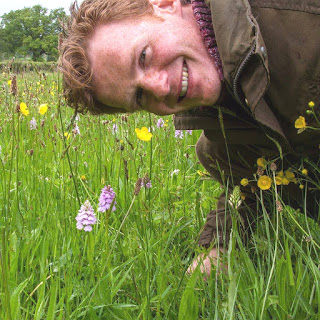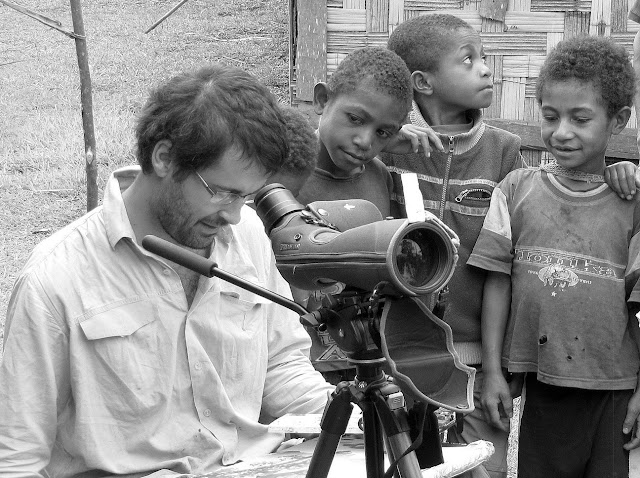Quarterly Wildlife Artist Feature-Jonathan Pointer
We are back with yet another exciting Wildlife Artist
feature this quarter. Have been interacting and following Jonathan's work for
almost a year, every time i look at his works my jaw just drops. When i requested Jon for an interview he was
kind enough to take time out of his busy schedule to answer to few of my
questions.
I am over moon and really excited to share my
conversation with Jon, with you all!
Without any further delay, lets speak to Jonathan Pointer, shall we?
Name of the Artist: Jonathan
Pointer
Location: United Kingdom
Date: October 2018
Form of Art: Painting
Contact details: http://www.pointer-wildlife-art.co.uk
Artist Introduction
Jonathan Pointer was born in 1974 and as a child lived in
the Middle East, where exotic birds and the back-drop of desert, provided an
early stimulus in what has since proved to be a lifelong passion for nature and
the great outdoors.
Inspired by Victorian art, Jonathan’s work has a
traditional feel, combining realism and a strong sense of narrative. His
approach to painting is highly individual with all the elements within the
painting - subject, flora and landscape - being treated with equal importance.
His work is therefore, part portrait, part botanical and part landscape, an
approach that places the subject within the context of habitat, time and place
and gives added opportunity for narrative within the painting. This dedication
to all aspects of nature means that his larger paintings can take months to
complete, with an output of no more than 10 paintings a year adding to the
collectability of his work.
As an artist he has exhibited widely, both nationally and
internationally, and is represented by several leading galleries. Past
exhibitions include - The Society of Wildlife Artists - Christies Wildlife and
Sporting Art auctions - Olympia Fine Art and Antique Fairs - The Royal West of
England Academy - and Birds in Art in America.
Jonathan lives with his artist wife in West Wales,
“somewhere by the river” surrounded by high wooded hills, ruined castles and
wild moorland. He rears Chickens, Pheasant and Partridges purely for the
pleasure and tries to live a simple life, working with the seasons.
Indian Monitor Lizard-Oil on Canvas
Dear Jon, could you please share with us when and how your journey toward
art started?
What inspired you to take up art?
Art has always been an important part of my life. From a child I have always been creative, always found escape in drawing and making various objects, such as toys and models . As a child my earliest drawings involved drawing dinosaurs, animals, soldiers-the typical young boy’s interests. As I got older those drawings also matured. Curiously it was only when I was in my late teens that I began to portray the natural world-animals, birds and flowers in my art.
Art has always been an important part of my life. From a child I have always been creative, always found escape in drawing and making various objects, such as toys and models . As a child my earliest drawings involved drawing dinosaurs, animals, soldiers-the typical young boy’s interests. As I got older those drawings also matured. Curiously it was only when I was in my late teens that I began to portray the natural world-animals, birds and flowers in my art.
I think having lived in the very rural countryside as I grew up and
(importantly) before the distraction of the computer and internet age had
begun, most of my time was spent playing outdoors and then fishing at every
spare moment. This appreciation for nature seemed fulfilled by those activities
and animal or wildlife art only began when I reached a mature enough level to
want to create meaningful art involving the natural world.
Honey Badger-Oil on Canvas
May i know what mediums do you like to work with the most and why?
I work in Oil paint for all of my painting. No other paint medium is as rich and flexible as oil. I find the few times I still use Acrylic to be very frustrating, it’s a plastic medium, it dries too quickly, allows inferior blending and is so thin (and as a result not as rich as an oil paint).
Oil paint allows me to subtly blend colours, I work “wet on wet” and rarely paint with glazes, instead preferring to paint as thickly as control and detail will allow with the correct colours for the wanted outcome.
Another important factor in using Oil paint is its familiarity with the clients
who buy my work, “Oil on canvas” sounds so much more familiar to a layman,
whereas those artists who paint in Acrylic
on MDF board will probably have many collectors wondering what is this un-familiar paint and paint surface? That’s no small doubt to put into a potential
collectors mind if they are unsure or not to invest in you!
Bengal Tigress-Oil on Canvas
May i know how did you learn this art form? Did you have a Mentor?
I was fortunate to go to Art college from the age of 16. That said, I largely feel I am self taught as far as pure technique goes. Art college, where it is useful, can be from being around other, learning young artists, you share ideas, learn from one another, discuss. I do not believe you need to go through Art college to be a full time artist. If you have the talent you will sell and support yourself. I know many self-taught full time artists who did not go through Art college. A similar experience can be had by being active online with other artists and having the ability to take on board advice from more experienced artists or artists who approach their own art in a very different manner.
I was fortunate to go to Art college from the age of 16. That said, I largely feel I am self taught as far as pure technique goes. Art college, where it is useful, can be from being around other, learning young artists, you share ideas, learn from one another, discuss. I do not believe you need to go through Art college to be a full time artist. If you have the talent you will sell and support yourself. I know many self-taught full time artists who did not go through Art college. A similar experience can be had by being active online with other artists and having the ability to take on board advice from more experienced artists or artists who approach their own art in a very different manner.
Visiting art collections/museums is also important; learning from past
masters is the greatest benefit to a living artist. I have a huge collection of
art books, my style is my own but I take inspiration from so many different
forms of art-here is a good art education without needing to go to art college!
Sambar Deer-Oil on Canvas
Now for the most interesting part of our
conversation, could you share about your journey to Asia?
The artwork I have sent for this article stems from several wonderful, exciting trips I made to the Indian subcontinent in the 2000s. As a young, aspiring artist I dreamed of travelling to new places, seeing new animals and painting those experiences. Wildlife art at this time was dominated by African themed wildlife art. The work was exciting but often flawed through repetitions of themes (such as a Bull elephant in a cloud of dust) and also the over painting of the big game to the exclusion of African smaller game and often the wonderful birds too.
At this time the BBC ran a series “The Land of the Tiger” and I was
enthralled. A rich continent, diverse in habitat and wildlife, quite different
from my usual European-themed subject matter and apart from the Tiger, rarely
painted, I knew I had to go.
Common Palm Civet-Oil on Canvas
Really interested to know more about your
travel and how it influenced your artworks?
My trips to Northern and central India and a trip to Sri Lanka are some of my fondest memories; I met so many kind people, experienced new cultures and discovered so many new animals. When I returned I painted with an inspired fervour, birds, reptiles, mammals-all featured in my “Asian portfolio”. The work I produced felt new to me (if only in terms of the new subjects I was painting for the first time) and also wonderfully rich and exotic compared to the often much drabber, familiar European subjects I usually painted. The work however sold poorly.
Apart from Tigers, my usual buyers knew little of Asian
wildlife and here I learnt an important lesson. As much as the artist wishes to
say something, challenge the norms, at the end of the day it is the buyer who
will hang that same artwork on their wall and without the buyer, the
professional artist is finished!
My Asian portfolio still continues but is very much placed on a back burner, waiting for times where, financially, when I am in better health, I can continue with those exotic birds and mammals and paint only for painting’s sake. Perhaps if I was selling in Asia itself and to those clients who love (as I do) those subjects then it would be viable but alas..
The trips I made to India and Sri Lanka are amongst my fondest wildlife memories. I fully intend to return one day and pick up where I left off.
My Asian portfolio still continues but is very much placed on a back burner, waiting for times where, financially, when I am in better health, I can continue with those exotic birds and mammals and paint only for painting’s sake. Perhaps if I was selling in Asia itself and to those clients who love (as I do) those subjects then it would be viable but alas..
The trips I made to India and Sri Lanka are amongst my fondest wildlife memories. I fully intend to return one day and pick up where I left off.
Bonnet Macaques & Prayer flags-Oil on Canvas
Well Jon, i wish
you do visit Asia sometime again soon! Glad to know that your trip to Asia was a
memorable one.
And i do hope buyers from
Asia would check out your masterclass artworks and you receive loads of commissioned
works from here and world over!
Wishing you great health and more paintings for rest of this year!
Really thank you so much for sharing your thoughts and
these exclusive materclass artworks on
Asian subjects with us!
You may follow Jonathan's works from the below links:
Facebook page: https://www.facebook.com/jonathanpointerart
Instagram: pointerjonathan









Comments
Post a Comment